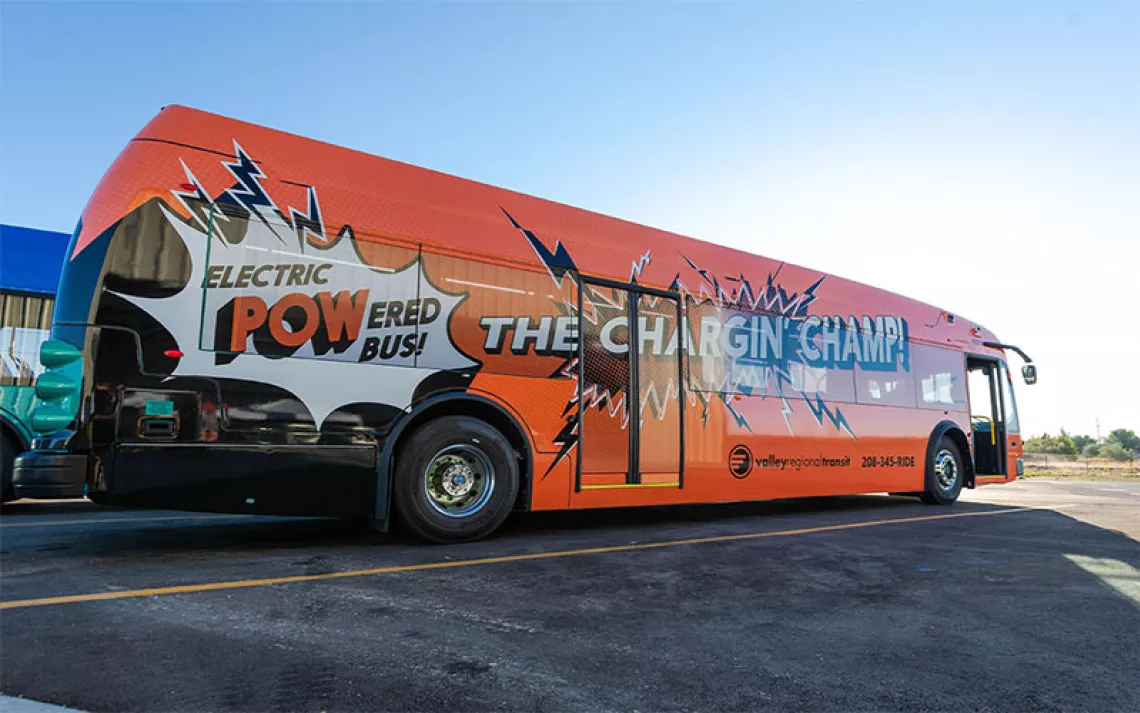Look Out, Detroit—Here Comes the 3D Printed Car
Can simplifying the manufacturing process slash a car's environmental impact?
Its sleek, fuchsia hue made Divergent 3D’s “Blade” hard to miss as the centerpiece of last month’s Los Angeles Auto Show. Sure, the world’s first partially 3D-printed car can accelerate from zero to 60 miles per hour in 2.5 seconds, but it’s the cutting-edge technology behind the prototype that is really mind-blowing.
The company’s innovative manufacturing system seeks to revolutionize the car industry—dramatically reducing the sector’s environmental impact in the process.
Worldwide, there are over a billion cars on the road today, and that number is expected to double in the next two decades. While many environmentalists hope those new cars will be low- or zero-emission, Kevin Czinger, CEO of Divergent 3D, sees electric vehicles as “just the tip of the iceberg” for reducing the auto industry’s massive carbon footprint.
Czinger disputes the mainstream notion that tailpipe exhaust is global warming’s chief cause when it comes to motorized vehicles. “We are fooling ourselves collectively in a way that will destroy the planet,” Czinger says. “If you’re not looking at the total life cycle of a product, you’re not going to see where most damage occurs.”
Indeed, vehicle manufacturing has the largest environmental impact of any industry—beating out both notoriously dirty coking plants and the meat-processing sector, with all of its methane-producing cows—according to a recent UN report.
In 2009, Czinger cofounded Coda Automotive, an electric car company that—partnered with a Chinese automaker—built a large-scale manufacturing facility in China. It was there, under a dense layer of industrial smog, that he became particularly aware of the automotive sector’s immense effect on the environment. The process begins with the iron ore, which needs to be mined, transported, processed, and further shipped to a car factory. Then, there’s the mile-long assembly line of welding and constructing and every other step leading up to a 15-hour, toxic paint job. A report by the National Academy of Sciences found that emissions from driving a vehicle only contribute a quarter to a third of its total damages; the rest accumulates before a car hits the road.
Not all scientists share this perspective. David Reichmuth, senior engineer of the Union of Concerned Scientists’ Clean Vehicles Program, says that the transition from gasoline vehicles to electric vehicles remains the most important step for curbing the auto industry’s carbon footprint. A recent report that he coauthored, which compares vehicles from cradle to grave, found that for two-thirds of Americans, driving an EV means lower global warming emissions than driving a car that gets 50 miles per gallon.
Reichmuth sees greening vehicle manufacturing as an effort that should be secondary. “As we transition to electric vehicles and cleaner sources of electricity, we are going to dramatically reduce the emissions from using vehicles,” he says. “This means that more and more of the fraction of the emissions will come from that manufacturing.”
Still, while electric vehicles pollute significantly less while being driven, the carbon footprint of their manufacturing is comparable to that of their gas-guzzling counterparts. The Union of Concerned Scientists report, for example, found that the emissions produced while manufacturing a full-size Tesla Model S rear-wheel car are equivalent to those of a similar-size internal combustion car. (That’s excluding the electric vehicle’s battery, which adds one metric ton of CO2 emissions to process.) Last year, Tesla also reported emitting more nitric oxide than permitted by air regulation standards at its factory in Fremont, California.
Divergent 3D’s manufacturing method presents an alternative to this polluting, energy-intensive operation. Czinger describes his novel process as “putting modular Lego blocks together,” except instead of plastic cubes and colorful, kid-friendly connectors, the manufacturer uses carbon fiber rods and 3D printed nodes to join together the vehicle’s structure.
Over the past two decades, the standardization of carbon fiber materials within the aerospace industry has driven their price down tremendously, and automakers hope to see the cost drop even further in the near future. These composites are both lightweight and ultra strong—characteristics necessary for the structures to become safety certified. Once mass produced, carbon fiber rods can serve as the components of any chassis or the vehicle’s skeleton.
“The question is how do you join those together without welding and all the traditional manufacturing techniques,” Czinger says. “And that’s where 3D printing comes in.”
Through 3D printing, the software can build complex features into the piece of metal that are impossible to manufacture via standard procedure. These 3D-printed metal connectors contain built-in alignment elements as well as interfaces that grip together. They’re also designed with channels that allow the assembler to draw a vacuum and then inject an adhesive through a different port, bonding the nodes together into any modular structure. The process can be used for vehicles ranging from motorcycles to full-size trucks. “It literally takes a mile-long factory line and reduces it to one small station,” Czinger says.
The finished product, too, benefits from streamlined efficiency. The lightweight materials used to create the automobile’s body will decrease the weight of a standard five-passenger car's chassis by over half and reduce the number of parts per vehicle by more than 75 percent. It also dramatically lowers the upfront costs necessary for standard car manufacturing, such as that of hard-metal tooling and stamping equipment.
Czinger adds that because the technology is based on computerized designs connected to the 3D printer, not design-specific equipment, the machine can create a wide range of vehicles to be assembled. This method allows car companies to do away with the frozen templates that characterize manufacturing—and allow automakers to more quickly respond to market shifts.
The system’s low-cost, high-profit attractiveness is already drawing in global car companies. Divergent 3D recently teamed up with Altran, a high-tech engineering firm, to work on scaling up the technology. Earlier this year, PSA Group, a leading French car manufacturer, signed a strategic partnership with the company. The global automaker will continue to draw from its broader supply chain for other sourced parts beyond the vehicle’s structure—ranging from the engine to smaller gadgetry. The process also does not alter the emissions-intensive nature of EV batteries. Still, PSA Group sees the integration of Divergent 3D’s technology into its manufacturing process as a huge success.
"We are talking about a radical change for our industry,” said Carlos Tavares, chair of PSA Group’s managing board, in a statement.
The looming question that accompanies this kind of sweeping change is what happens when the sector eliminates thousands of manufacturing jobs. The Sierra Club has been a longtime partner with the United Auto Workers union, which has come out in support of both the Clean Air Act and Clean Power Plan in the search for a greener car economy. Historically reliant on U.S. car companies like General Motors, Ford, and Chrysler, cities such as Detroit have already been ravaged by the economic slumps that follow closed auto factories.
Czinger envisions the technology as an opportunity to relocalize the industry. With a much lower upfront capital cost, car manufacturing can be an affordable business for technology companies and smaller teams, not just the big conglomerates.
“The idea is that over 15 years, you’ve got these small, very-low-impact manufacturing facilities across the globe,” he says. “And in these facilities—with much, much lower capital costs and lower impact on the environment—you have people building products for the local economy.”
While not all of Divergent 3D’s products will look as elegant as the “Blade,” the technology’s real power lies in its efficient nature—with the potential to shift vehicle manufacturing toward a more sustainable future.
 The Magazine of The Sierra Club
The Magazine of The Sierra Club







